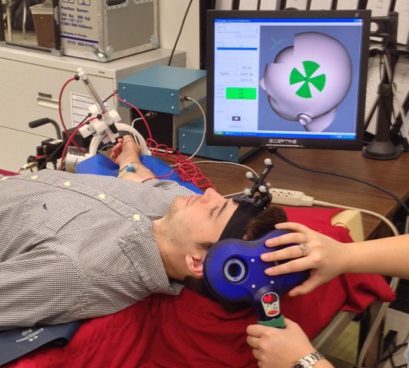Neuromodulation is defined as the alternation of nerve activity through the variety of nerve stimulation such as pharmaceutical agents, electrical signals, and other forms of energy, modulating targeted neural pathway behavior. Neuromodulation effects include functional recovery, relief of pain, tremor control and others. Upper limb sensorimotor function is commonly degraded with aging and is often impaired due to neurological disorders such as hemiparesis, spinal cord injury, and Parkinson’s diseases. However, there are few interventions that improve upper limb function in these populations. Neural plasticity refers to the adaptation in synaptic efficacy, and long-term potentiation (LTP) has been regarded as a model of motor learning by strengthening excitatory synapses due to repetitive synchronized excitation of presynaptic and postsynaptic neurons. LTP in the motor cortex can be induced with repetitive synchronized activation of neurons in the motor cortex with conditioned transcranial magnetic stimulation (TMS) in the form of paired associative stimulation (PAS) of the central motor system and electrical stimulation of the peripheral sensory system, inducing facilitatory neuromodulation in the neural pathway. Another research suggests that mechanical stimulation, stimulating muscle spindles in the tendon, in the form of mechanical vibration or tendon tapping, could replace electrical nerve stimulation. A number of different stimulation modalities can be combined and utilized.
We are currently developing a robotic mechanical stimulation device (See Figure) that is powered pneumatically [REFS 1 and 2]. The advantage of this engineered device is that it can provide focused mechanical stimulation at a defined timing and allows for the concurrent examination of brain activity with fMRI, if necessary, for future research. We choose to use mechanical stimulation in this study because that is the stimulation modality most often used in the actual clinical therapy, and thus will naturally lead to the development of rehabilitation robotics that can mimic and improve the employed clinical therapy. Using mechanical stimulation instead of electrical stimulation of peripheral nerves, however, it is unknown whether similar neuromodulation is obtained though repetitive PAS. We expect that the excitatory afferent input due to the mechanical stimulation of periphery ascends to the motor cortex and converges, at the right timing, with the neural activation due to TMS within the motor cortex.
Minoru Shinohara and Jun Ueda - Graduate Students: Euisun Kim and Waiman Meinhold

